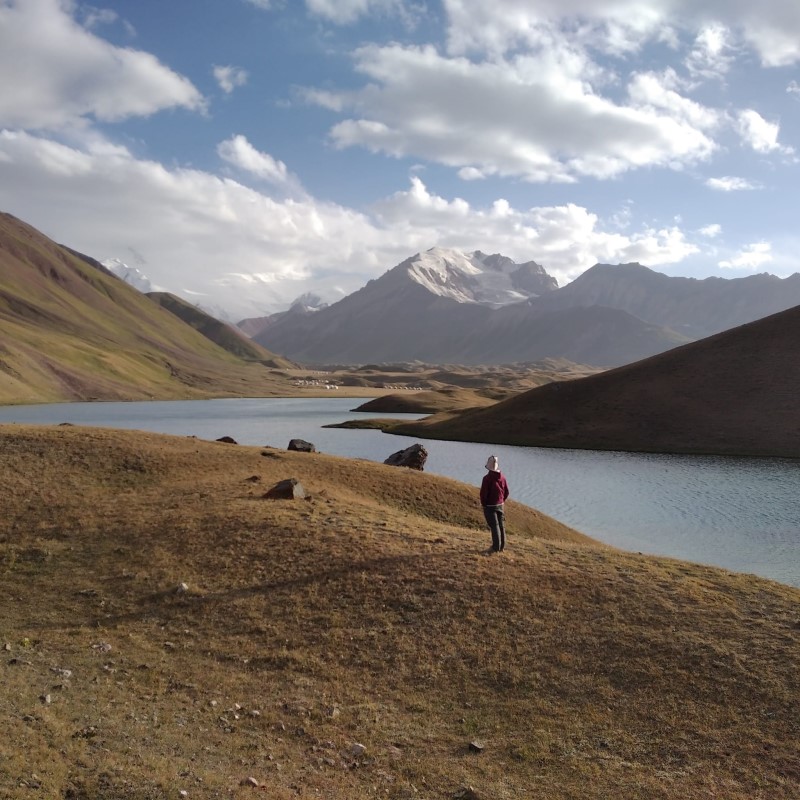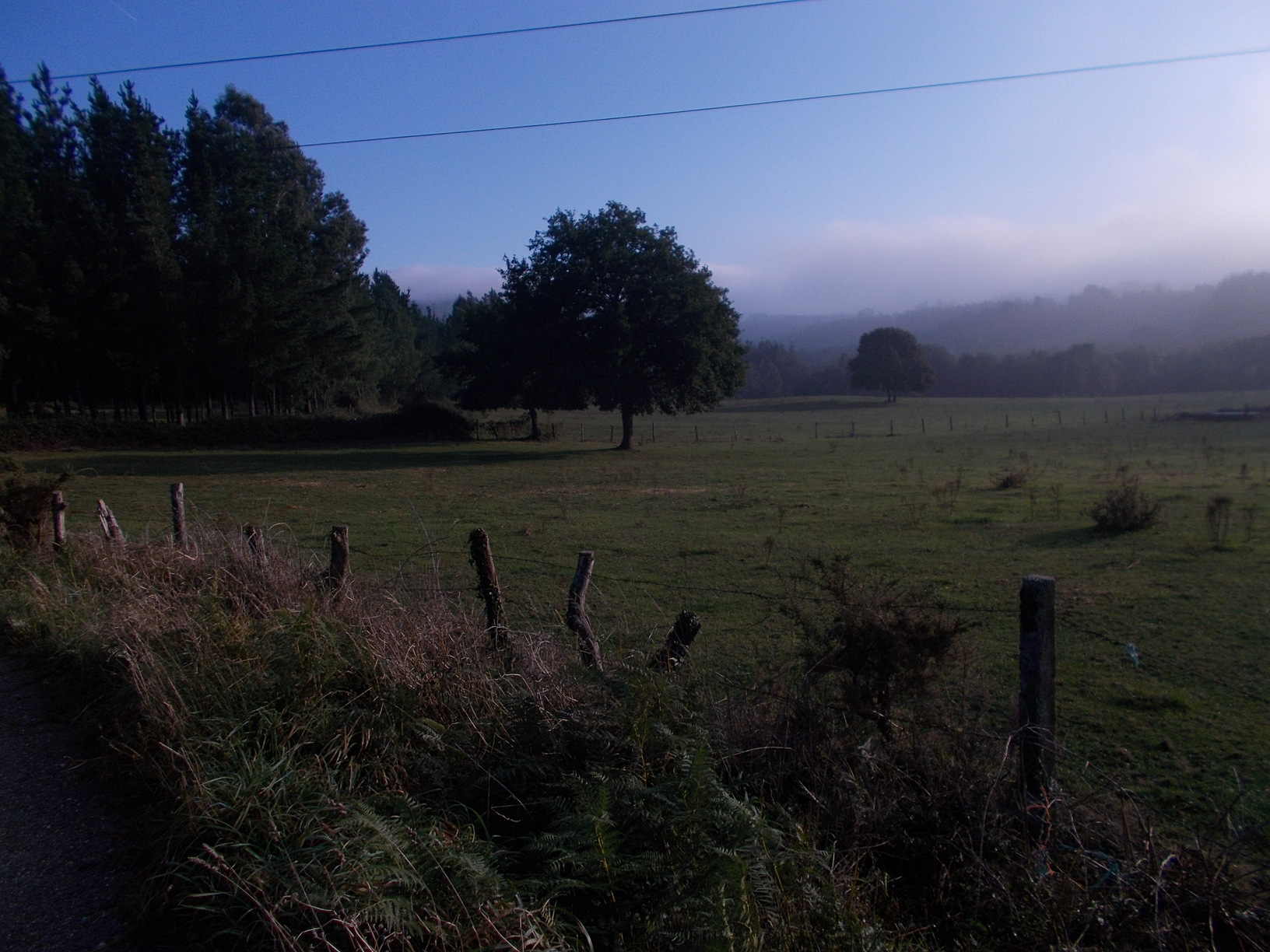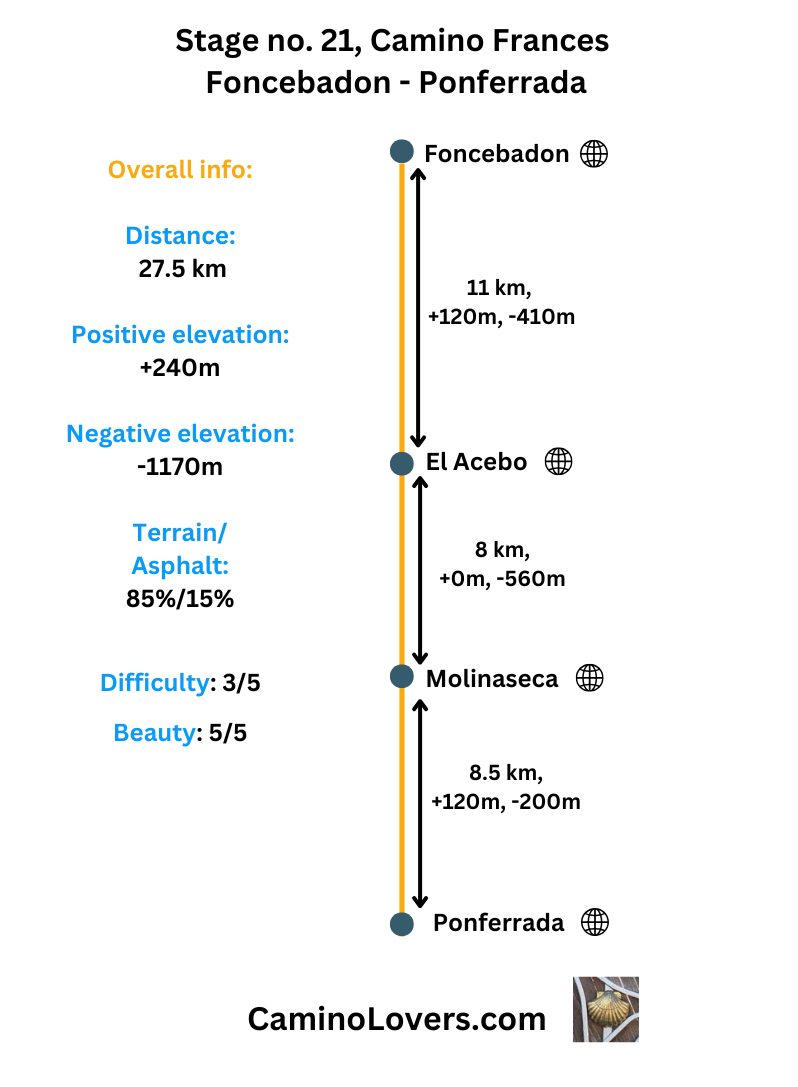
Basic Information
- Starting Point: Foncebadón, Spain – A mountain ghost town revived by pilgrims at 1,430 m above sea level (the highest place where you can sleep inside on the entire Camino Frances). There virtually aren’t any people living in town, except of people who run the infrastructure for pilgrims, and it is a pretty decent one, with albergues, restaurants, shops, and even an Italian pizzeria.
- Ending Point: Ponferrada, Spain – A historic city with a stunning Templar castle at 540m in the Bierzo valley. With over 60,000 people, you can find in town all services, including 5 pilgrim albergues, and plenty of good restaurants with international cuisine.
- Alternative Route Available: Not really, just a small detour at the very end, following the national road to Ponferrada, which saves you about 1 kilometer and 30 vertical meters of climbing, but in my opinion isn’t really worth taking. The road can be busy with traffic as well, something to take into consideration when you decide to take the alternative road.
- Distance: Official camino: 27 km (download GPS here). Alternative route: 26 km (download GPS here).
- Online Map: Official camino: map. Alternative route: map
- Elevation Difference: Official camino: +200 m ascent, -1,100 m descent. Alternative camino: + 170 m ascent, – 1070 m descent.
- Difficulty Score: 3/5, but if you struggle on descents, for example with knee issues, the score can easily be 4/5 or even 5/5.
- Beauty Score: 5/5. Definitely one of the most beautiful stages of the entire Camino Frances.
- Terrain/Asphalt Walking Ratio: Official route: 85% trails, 15% asphalt. Alternative route: 75% trails, 25% asphalt.
- Next stage: Camino Frances Stage no. 22, Ponferrada – Villafranca del Bierzo.
- Previous stage: Camino Frances Stage no. 20, Astorga – Foncebadon.
Elevation profile for the routes

– Official camino, for the first 8 kilometers you stay on the mountain ridge, in the beautiful zone of Cruz de Ferro. Then a descent starts, in some sections very steep (with gradient surpassing 20%), and in some sections also rocky. The last 9 kilometers o the stage are relatively flat again.

– Alternative route, the only difference is in the last 5 kilometers, when you follow the national road, and avoid a few small climbs, saving about 30 vertical meters of climbing/descending. As you can see on the chart, this way is also 1 km shorter than the official camino.
Advanced Info About the Stage
- Trail Marking: Generally good, though at times there can be a bit of confusion with local trail marks (also of yellow color) and also with the way for cyclists. Even if you take one of the other ways though, all these paths eventually connect sooner or later. The alternative 5 km following the national road start exactly here. To follow this alternative (which I do not recommend) you simply follow the road, instead of turning left where the yellow arrows point.
- Natural Highlights: In a way the entire stage is one of a natural highlights of the Camino, with the first 19 kilometers to Molinaseca, and especially the first 12 kilometers definitely the nicest section. A rather underestimated part is the Molinaseca River, a beautiful spot with green grass to rest on after you take a swim in the river. If you have some time, there is a marked river path you can follow on your way to Molinaseca, called Ruta de las puentes de malpaso. It adds 2 km extra to your walk, and I mapped it for you here. Especially in spring when the river has more water it is a wonderful path to follow.
- Historical & Cultural Highlights:
- Cruz de Ferro: Ancient ritual site where pilgrims leave stones, symbolizing something they want to leave behind… Can be some grief in your heart, a painful memory, or perhaps your entire past. Location on Google maps here.
- The village of Molinaseca. Considered by many the most beautiful village on Camino Frances, the scenery with the clean mountain river, the bridge, the church, and the unique architecture, with all rooftops having the same color and a beautiful balance, will easily be one of the spots of the Camino that you will never forget.
- Ponferrada Castle and town center: Massive 12th-century Templar fortress, location and reviews on Google maps here. Templar knights played a pivotal role on the Camino in the past, and you can learn more about it while visiting the castle. Normal price 6 euro, if you bring a credential you’ll get a pilgrim discount and pay 4 euro. Open daily from 10am to 2pm and then from 4:30pm to 8:30pm. If you’re not into paying fees for entering places on the Camino, the town center of Ponferrada is still very nice, with some stunning views and lights in the evening.
- Camping/Bivouac Options: There aren’t any official camping places along this stage. However, for wild camping you can just climb any little hill near Molinaseca and pitch your tent in peace, or even try in the river area close to the path I described earlier (this one). You can also try your luck earlier, more in the mountains (in the zone of El Acebo for example), but if you do so consider the risks associated with camping the the mountain area (such as a possibility of an evening storm, sharp temperature drop at night, etc).
- Dog-Friendly Score: 4/5. Overall a nice stage for dogs with some great fresh water sources, shade, and with spending most of the time walking the trails. The seemingly endless rocky descent to Molinaseca can be tricky for some dogs though. There is one dog-friendly albergue in Ponferrada, called albergue Alea. Location and reviews on Google maps here. They charge 5 euro extra for staying with dog, but it is a nice place nevertheless.
- Special Remarks: If you’re tired from the crowds on Camino Frances, you have a unique chance to escape them for good in Ponferrada. A relatively new Camino called Camino Invierno splits here from the French way. “Invierno” means winter in Spanish, and the camino was originally meant as an alternative to French way in winter, avoiding some mountain passes in Galicia that can be covered in snow. However, people walk it mostly from spring to autumn. It is a nice way, with some great albergues and decent infrastructure for pilgrims overall (no need to sleep in hotels with maybe 1 exception), and while it is growing in popularity, still few people know about it, and you will meet a fraction of people you’d meet on the remaining of the French way. Maybe 10-20 pilgrims on your entire Camino. We do not have a guide for this Camino yet, but you can read more about it for example here. While there are some nice spots waiting on the French way still, there are nice spots also on Camino Invierno, and I would not consider one way superior to the other (in terms of natural beauty and spots worth seeing).
My accommodation picks for this stage
- Albergue La Casa del Peregrino, El Acebo (km 11). A hotel that serves also as a pilgrim hostel. Both private rooms and dorms, 80 beds in dorms. 15 euro/night, breakfast and dinner have extra cost. It is a huge complex with a beautiful swimming pool, and a decent common and dinning area. While it lacks pilgrim spirit, the complex is very nice with amazing views and sunset at the pool. You can check all photos and reviews and book it directly on Booking, exactly here.
- Albergue Compostela, Molinaseca (km 19): A nice family-run albergue with communal dinner and breakfast in the center of Molinaseca. 32 beds, 12 euro/night, dinner is extra 12 euro. Some single beds, nice communal area, very clean, friendly hosts. Probably the best place to stay in Molinaseca, though other albergues in the village are also decent. Location and reviews on Google maps here, check-in from noon. You cam book it easily on Booking, exactly here.
- Albergue Parochial de San Nicolas, Ponferrada (km 27): A super nice donation-based albergue in Ponferrada. Over 180 beds, beautiful garden, nicely-equipped kitchen, great communal spaces both inside and outside the house, pilgrim mass each day at 8pm. While some installations are a bit old, it is definitely a great place to stay. Location and reviews on Google maps here.
- Hostal Los Templarios, Ponferada (km 27): Looking for some privacy in the beautiful town of Ponferada, this hostel is your best bet. Located in a quiet corner of an old town, it offers clean and modern rooms, excellent breakfast, and easy access to everything Ponferada has to offer. Prices start from 40 euro/night, check-in from 2pm but them may let you in even at noon. Air conditioning comes handy on hot days… You can see all the pictures and reviews directly on Booking, exactly here.
Pictures from the stage:
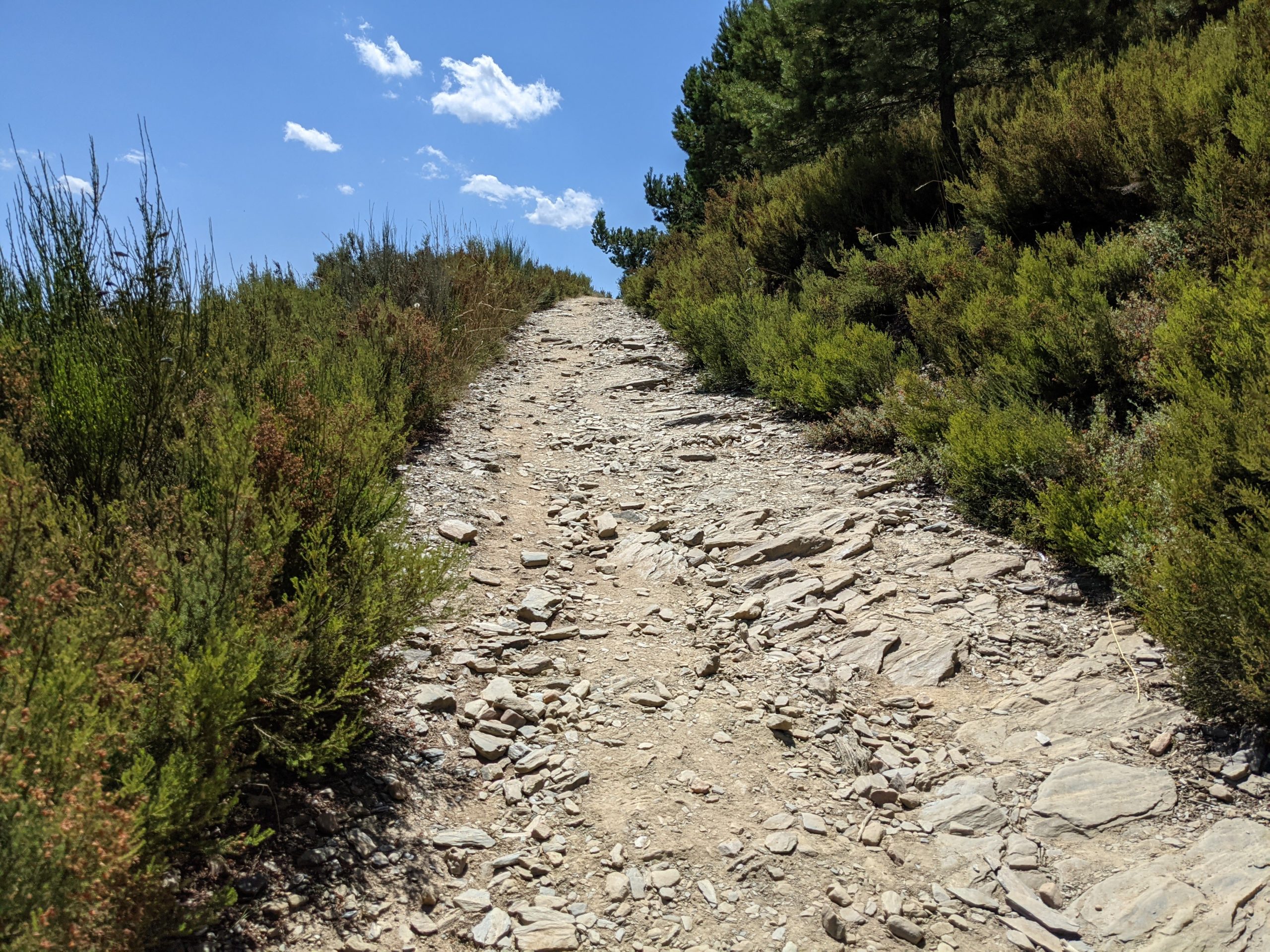 – A magical path towards the Cruz de Ferro (The iron cross).
– A magical path towards the Cruz de Ferro (The iron cross).
 – Cruz de Ferro late in the afternoon. I walked there from Foncebadon, leaving my backpack in the albergue and taking just a bit of water.
– Cruz de Ferro late in the afternoon. I walked there from Foncebadon, leaving my backpack in the albergue and taking just a bit of water.
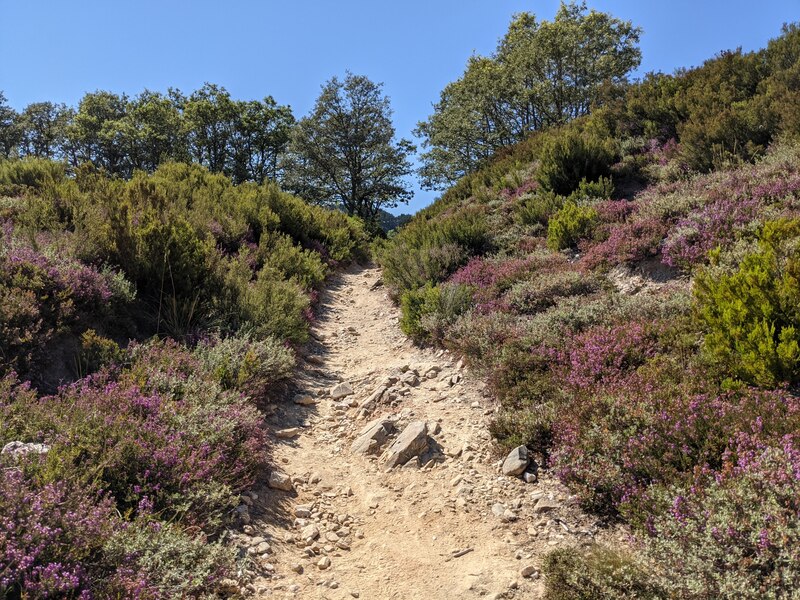 – From spring to autumn, you’ll find some beautiful flowers on today’s trail.
– From spring to autumn, you’ll find some beautiful flowers on today’s trail.
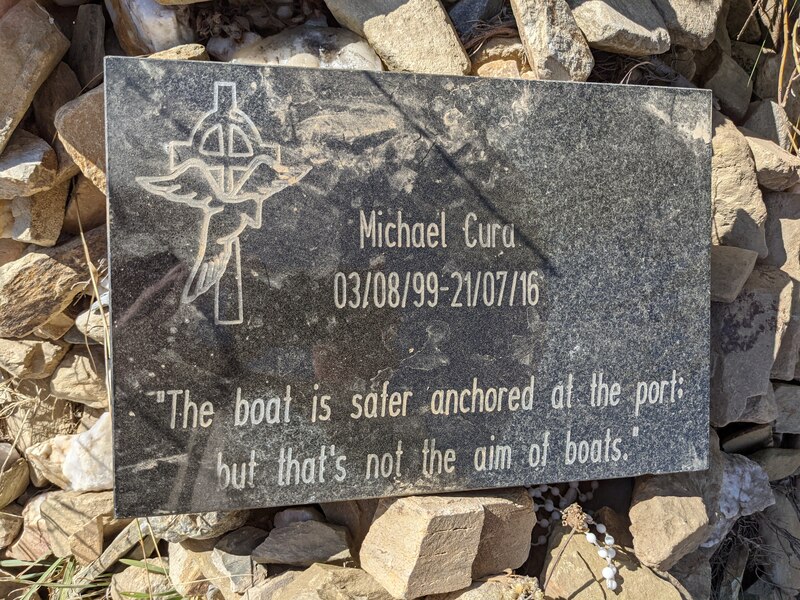 – This one brought tears to my eyes. But it is very true…
– This one brought tears to my eyes. But it is very true…
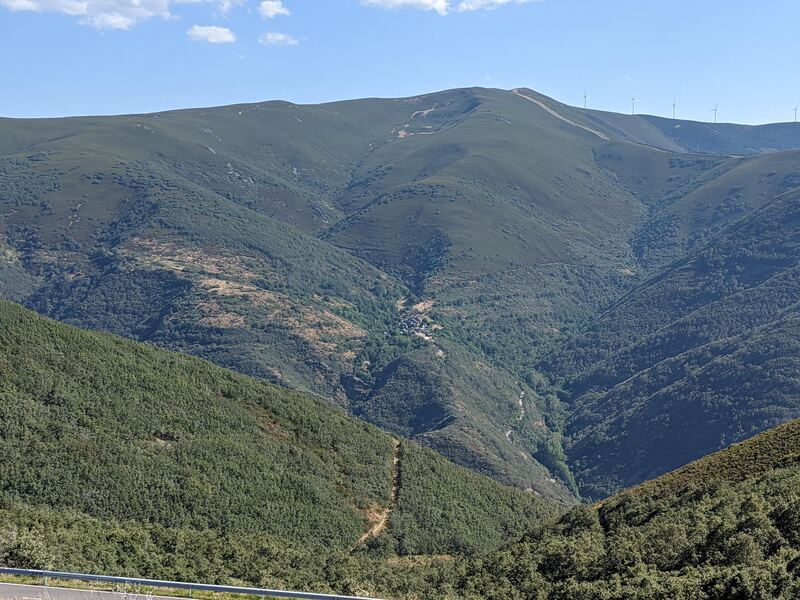 – The Leonese mountains from one of the viewpoints along today’s way.
– The Leonese mountains from one of the viewpoints along today’s way.
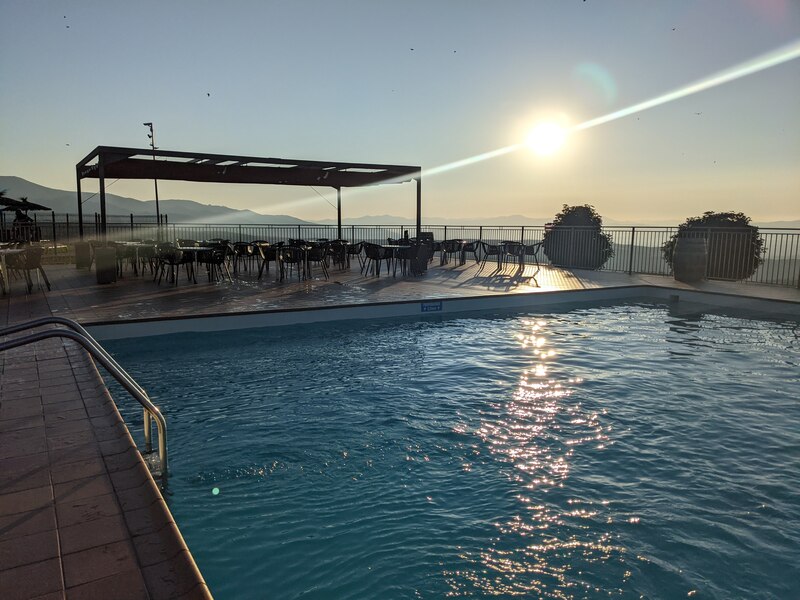 – Swimming pool in the albergue in El Acebo, with sunset views. I stayed there while doing this stretch of the Camino Frances for the second time, in the summer of 2021.
– Swimming pool in the albergue in El Acebo, with sunset views. I stayed there while doing this stretch of the Camino Frances for the second time, in the summer of 2021.
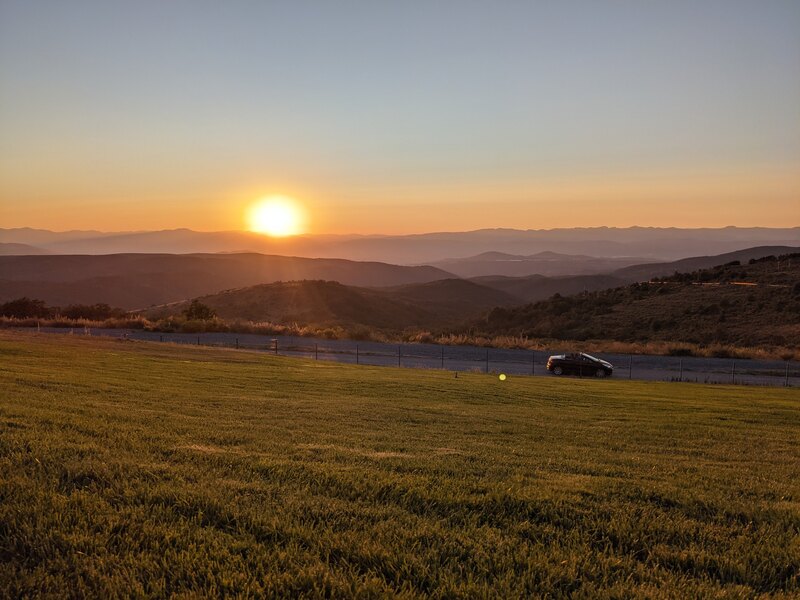 – Good morning on the trail 🙂
– Good morning on the trail 🙂
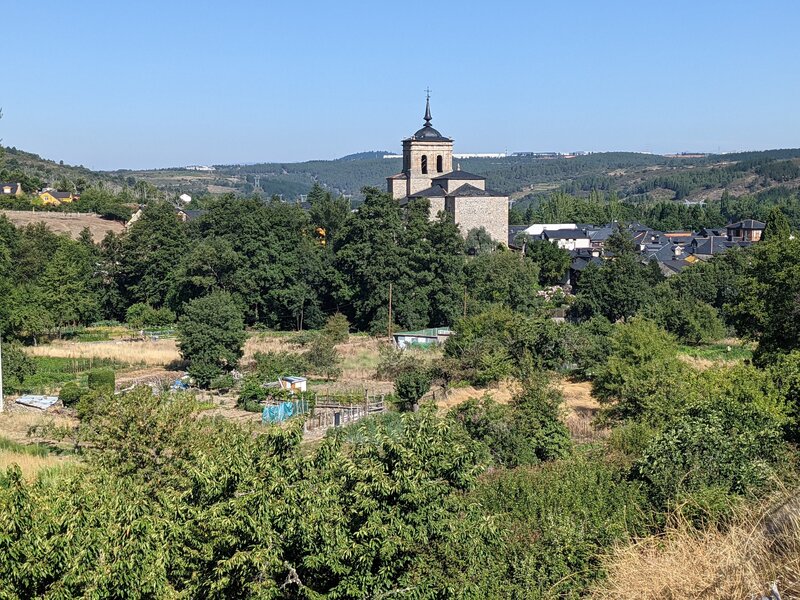 – Approaching the beautiful village of Molinaseca, definitely one of my favorite places of the entire Camino Frances.
– Approaching the beautiful village of Molinaseca, definitely one of my favorite places of the entire Camino Frances.
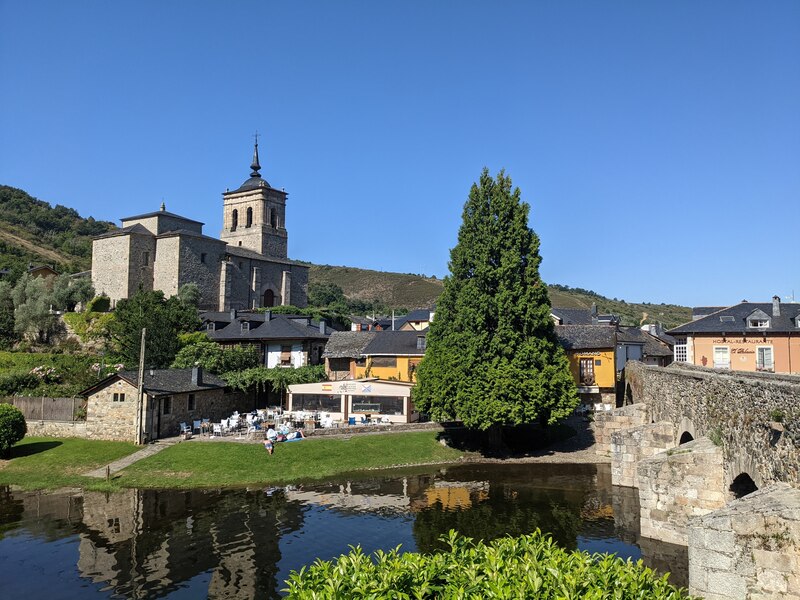 – The bridge and river zone of Molinaseca. Many pilgrims take a swim here.
– The bridge and river zone of Molinaseca. Many pilgrims take a swim here.
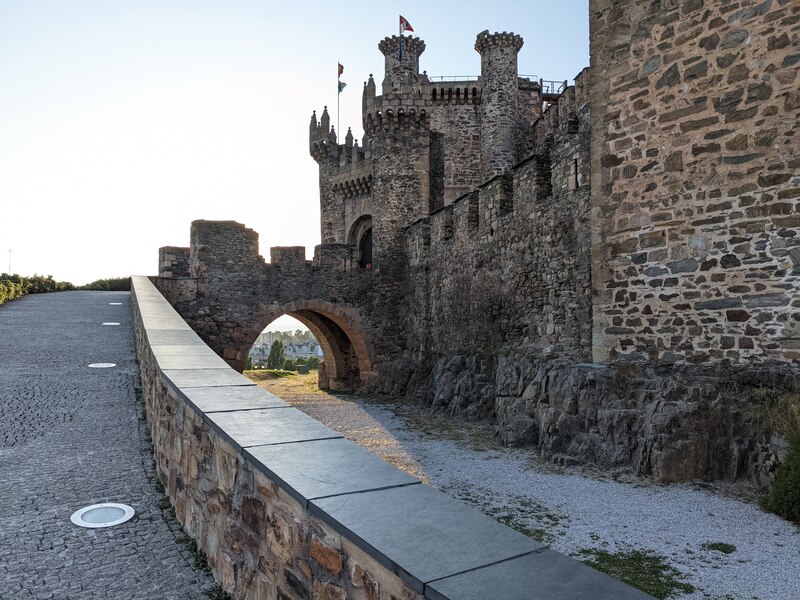 – The Templar castle of Ponferrada
– The Templar castle of Ponferrada
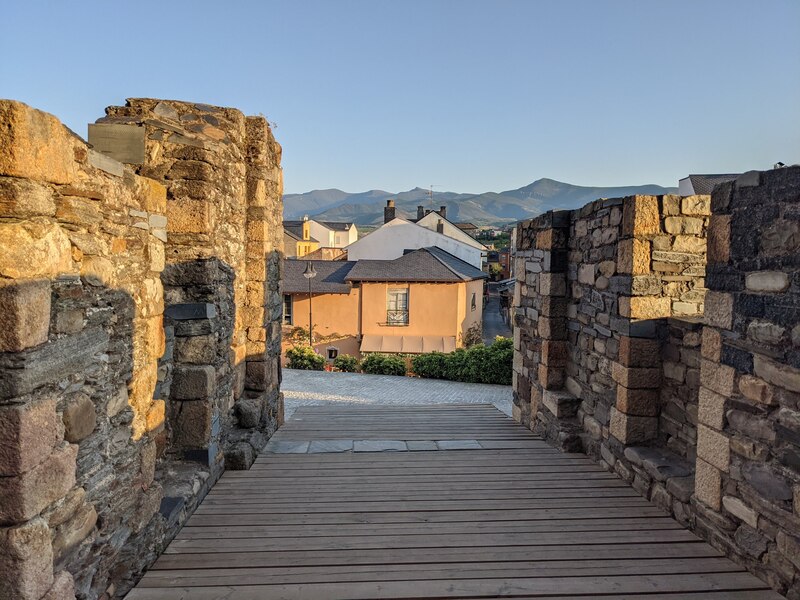 – A nice shot from Ponferrada.
– A nice shot from Ponferrada.
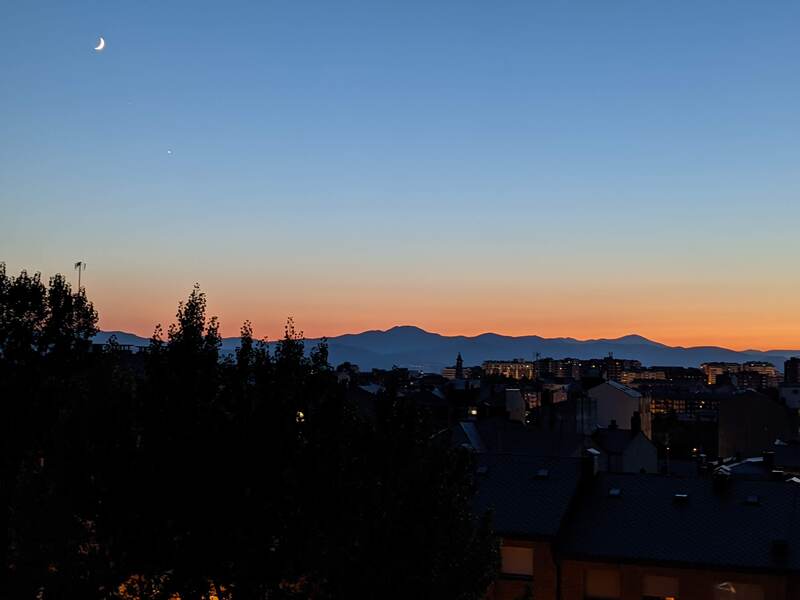 – And the sunset observed from a park in Ponferrada…
– And the sunset observed from a park in Ponferrada…
Few tips at the end
- Make frequent breaks on the steep decent, especially if you struggle with knee issues. It may be tempting to go down to Molinaseca quickly, trying to be done with the tricky descent. However, this is the longest and most tricky descent on the entire Camino Frances, and for your knees that aren’t accustomed to such descents, especially with you carrying a heavy backpack, the safe strategy is to stop at least a few times, just sit and let the knees to relax, and then restart the descent.
- If you want to enjoy some solitude at Cruz de Ferro, start very early, or climb there the evening before, without a backpack. Cruz de Ferro is one of the special places on the Camino. Considering the symbolic meaning of the place, I believe it is best being there on your own, or just with a few people around. However, during the normal pilgrim morning it is juts too busy… Hence if you want to leave something behind you, or shed some tears on this magical place, your best bet is either walking there from Foncebadon in the evening, or starting really early in the morning.
Next/Previous Stage
- Next stage: Camino Frances Stage no. 22, Ponferrada – Villafranca del Bierzo.
- Previous stage: Camino Frances Stage no. 20, Astorga – Foncebadon.
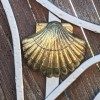


![Ultralight Packing List for Camino de Santiago [2025 Edition]](https://caminolovers.com/wp-content/uploads/2022/03/altra-shoes-640-x-480.jpg)

